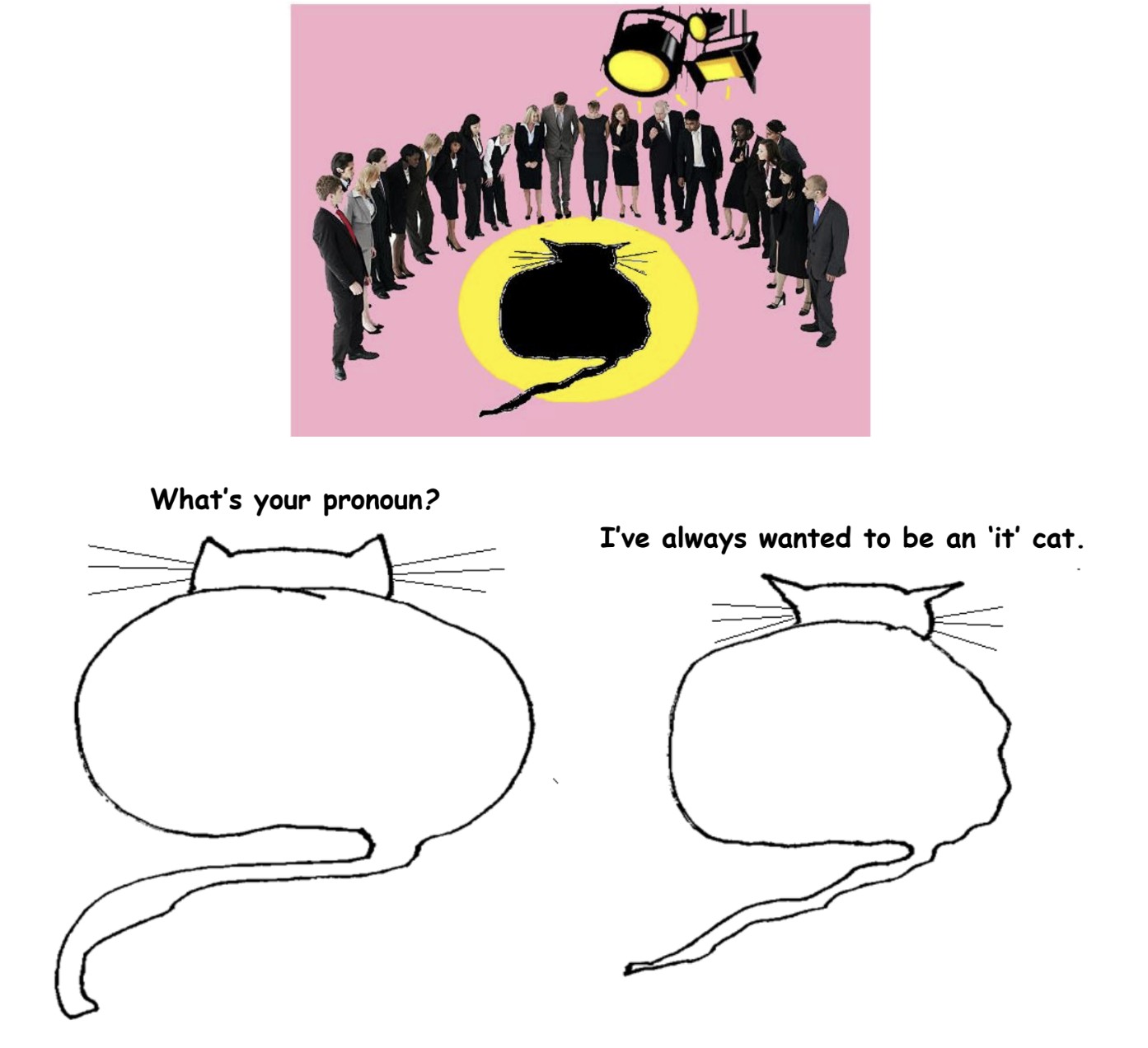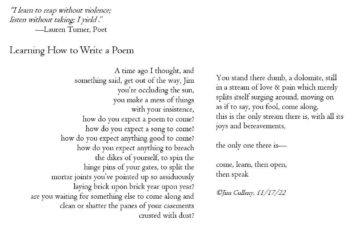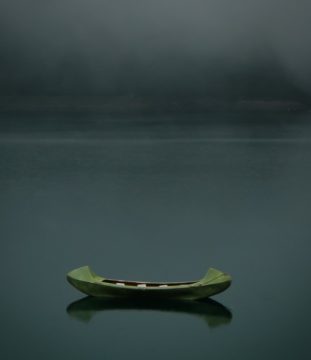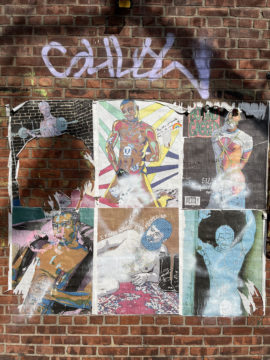by Eric Bies
 I think of Pearl S. Buck and end up thinking of William F. Buckley. I think of The Good Earth—of hovels unworthy of Frankenstein’s monster and a palace sacked in smoke, its shriveled matriarch glued to an opium pipe—and end up thinking of Firing Line. Clicking over to YouTube, typing, hitting enter, clicking, watching: after the FBI Warning about unauthorized reproduction and so forth, past the Hoover Institution’s little slide about same, through the twittery culture-conferring bit of Bach as theme, this is number 267, an interview with Jorge Luis Borges. I giggle a little as South America’s Titan, gazing literally blindly out past everyone in attendance that day in Buenos Aires, clips and interrupts Buckley’s stately introduction, an introduction that begins with Buckley reading off words about Borges, by Borges.
I think of Pearl S. Buck and end up thinking of William F. Buckley. I think of The Good Earth—of hovels unworthy of Frankenstein’s monster and a palace sacked in smoke, its shriveled matriarch glued to an opium pipe—and end up thinking of Firing Line. Clicking over to YouTube, typing, hitting enter, clicking, watching: after the FBI Warning about unauthorized reproduction and so forth, past the Hoover Institution’s little slide about same, through the twittery culture-conferring bit of Bach as theme, this is number 267, an interview with Jorge Luis Borges. I giggle a little as South America’s Titan, gazing literally blindly out past everyone in attendance that day in Buenos Aires, clips and interrupts Buckley’s stately introduction, an introduction that begins with Buckley reading off words about Borges, by Borges.
Buckley: About himself he said recently, “As for a message, well, I have no message. Some things—”
Borges: That’s right, there’s no message whatever.
Buckley [places a hand on Borges’ arm]: “Some things simply occur to me and I write them down with no aim to hurt anyone or to convert anyone. This is all I can say. I make this public confession of my poverty before everybody—”
Borges: Yes.
Buckley: “Besides, had I not done so, you would have known—”
Borges: But I think you may know.
Buckley: “—you would have known it was true,” yes that’s what I said.
Borges: Yes.
Buckley: I’m just going to finish this introduction, and then we’ll exchange—
Borges: That’s right, yes, that’s right.
Buckley: Uh, about him others—
Borges: [inarticulate]
Buckley: About him others have written that he is the greatest living writer. Still others, that he has influenced the literature of the world more than anyone alive. Jorges Luis Borges lives here in Buenos Aires, although he has traveled extensively, especially in the United States, and taught most recently at Harvard for a year. He is blind, since the late fifties. He does not mind it, he says [Buckley’s brows go up], because now he can live his dreams with less distraction—
Me: CLICK.
Video paused, I get up from my desk, traverse the kitchenette, use the toilet, and refill my glass with water from the tap. My apartment isn’t bugged or anything, but if it were, say, with a dozen little cameras, or even if the little man in my phone were to tune in for a peep to help pass the afternoon, dangling his eye from the eye of my phone which I carry from point to point before returning to my desk—nothing would appear awry. On the surface, I, the walls, even the water in this glass remain totally unperturbed. But, for seventy seconds or so, those last few pre-pause words, far from the conclusion of Buckley’s introduction, have been shimmering brightly inside of me. Read more »


 Aqui Thami. Resisters, 2018.
Aqui Thami. Resisters, 2018. I can’t sing. Or so I always thought. A notorious karaoke warbler, I would sometimes pick a country tune, preferably Hank Williams, so that when my voice cracked, I could pretend I was yodeling. Then one night, I stepped up to the bar’s microphone and sang a Gordon Lightfoot song.
I can’t sing. Or so I always thought. A notorious karaoke warbler, I would sometimes pick a country tune, preferably Hank Williams, so that when my voice cracked, I could pretend I was yodeling. Then one night, I stepped up to the bar’s microphone and sang a Gordon Lightfoot song.

 My father’s mother—Annie Newman, my grandmother or Bubbi—was born Hannah Dubin in a shtetl in what is now Ukraine a few years before the Great War. One of her earliest recollections—in addition to the image of her own grandmother hiding in a baby carriage to escape marauding Cossacks—was of being able to see troop movements from the roof of her house, presumably during the Russian Imperial Army’s advance against Austria-Hungary, an engagement that occurred in Galicia, farther to the west, in 1914. Much later, in the aftermath of the nuclear accident in Chernobyl in 1986, when that obscure place was suddenly on everyone’s lips, she began recalling that her village, which she called Priut, in a region she referred to by its Russian name as Екатеринославская губернія, or Yekaterinoslavskaya guberniya—the Yekaterinoslav Governorate, a province of the Russian Empire—was not far from that site, which had now become infamous for a catastrophic meltdown.
My father’s mother—Annie Newman, my grandmother or Bubbi—was born Hannah Dubin in a shtetl in what is now Ukraine a few years before the Great War. One of her earliest recollections—in addition to the image of her own grandmother hiding in a baby carriage to escape marauding Cossacks—was of being able to see troop movements from the roof of her house, presumably during the Russian Imperial Army’s advance against Austria-Hungary, an engagement that occurred in Galicia, farther to the west, in 1914. Much later, in the aftermath of the nuclear accident in Chernobyl in 1986, when that obscure place was suddenly on everyone’s lips, she began recalling that her village, which she called Priut, in a region she referred to by its Russian name as Екатеринославская губернія, or Yekaterinoslavskaya guberniya—the Yekaterinoslav Governorate, a province of the Russian Empire—was not far from that site, which had now become infamous for a catastrophic meltdown.  A dear friend of mine recently passed away unexpectedly. He had recommended I read Viktor Frankl’s
A dear friend of mine recently passed away unexpectedly. He had recommended I read Viktor Frankl’s 
 In the typical American city where we live, the average commute time is 78 minutes a day and 97.5% of
In the typical American city where we live, the average commute time is 78 minutes a day and 97.5% of  The
The 

 Every generation, when it reaches a certain age, makes two proclamations: Saturday Night Live used to be funnier, and “kids these days” are lazy and stupid.
Every generation, when it reaches a certain age, makes two proclamations: Saturday Night Live used to be funnier, and “kids these days” are lazy and stupid.

 I think of Pearl S. Buck and end up thinking of William F. Buckley. I think of
I think of Pearl S. Buck and end up thinking of William F. Buckley. I think of  In late March the United Nations adopted a landmark
In late March the United Nations adopted a landmark 
 The term “gastronomy” has no agreed-upon, definitive meaning. Its common meaning, captured in dictionary definitions, is that gastronomy is the art and science of good eating. But the term is often expanded to include food history, nutrition, and the ecological, political, and social ramifications of food production and consumption. For my purposes, I want to focus on the conventional meaning of gastronomy for which that dictionary definition will suffice.
The term “gastronomy” has no agreed-upon, definitive meaning. Its common meaning, captured in dictionary definitions, is that gastronomy is the art and science of good eating. But the term is often expanded to include food history, nutrition, and the ecological, political, and social ramifications of food production and consumption. For my purposes, I want to focus on the conventional meaning of gastronomy for which that dictionary definition will suffice.